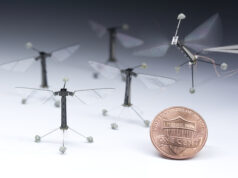A Discovery in the Red Silence
In the vast and ancient silence of Mars, NASA’s Curiosity rover has encountered a chemical whisper—a trace of something long past, perhaps never living, yet uncannily familiar.
Within the dust of a Martian lakebed, the rover has uncovered complex organic molecules: decane, undecane, and dodecane—hydrocarbons composed of 10, 11, and 12 carbon atoms, respectively.
To many, these are mere chemical curiosities. But to the scientists of Earth, they are the fragments of potential. These molecules, revealed from a rock sample deep within Curiosity’s Sample Analysis at Mars (SAM) instrument, represent the most complex organic matter ever detected on the Red Planet.
Their presence suggests that prebiotic chemistry—the same kind that may have preceded life on Earth—once stirred beneath Mars’ now-dead surface.
As reported in the Proceedings of the National Academy of Sciences, this discovery is not just a scientific achievement. It is a message in molecular code—a whisper from Mars’ past that organic complexity once had a foothold here, in the shadows of forgotten seas.
The Ghosts of Lakebeds Past
Long before it became a desert of iron and dust, Mars was a world shaped by water. The molecules detected—long-chain hydrocarbons resembling the fatty acids essential for life on Earth—may be remnants of that aqueous past.
On Earth, fatty acids are vital: forming cell membranes, facilitating metabolism, encoding life’s order.
Yet nature does not reserve complexity for the living. These same molecules can arise abiotically, through the alchemy of water, minerals, and time—particularly within hydrothermal systems, akin to Earth’s deep-ocean vents.
Thus, while Curiosity has not discovered life, it has uncovered the kind of chemistry life requires.
“We’re not saying we’ve found Martian microbes,” said one NASA scientist. “But we are edging closer to understanding whether Mars could have hosted the processes that eventually gave rise to life.”
Curiosity’s Eternal Vigil
This discovery builds upon years of methodical exploration. Curiosity, NASA’s nuclear-powered rover, has roamed Gale Crater since 2012, examining its strata for secrets embedded in rock and time.
Previous findings had revealed simple organic molecules—primitive, fleeting whispers of chemistry.
But these new, larger compounds, their carbon backbones intact despite exposure to cosmic radiation and oxidizing soil, suggest a robust preservation of Martian history. They are like fossils of reactions—uncharted, possibly lifeless, yet deeply meaningful.
And they strengthen the possibility that more complex, biosignature-bearing molecules may lie preserved in subsurface deposits, shielded from radiation for billions of years.
For more on NASA’s ongoing Martian explorations, visit the Mars Exploration Program. You can also explore details about the SAM instrument and its role in Curiosity’s mission on NASA Goddard’s site.
The Great Cosmic Perspective
In Clarke’s own vision, the cosmos was never silent—it was waiting. The presence of organic molecules on Mars, though not evidence of life itself, transforms our understanding of planetary potential.
It reminds us that the seeds of life may not be unique to Earth—that the chemistry we once believed sacred may instead be universal.
If simple organic compounds can form in alien lakebeds—whether through geology or some more ancient, forgotten biology—then perhaps life is not a singular anomaly, but an emergent pattern across the stars.
And so, from the ochre dust of Mars, Curiosity continues its odyssey, a lone machine gathering echoes of possibility.
Beyond Mars: What Comes Next
NASA’s next steps involve collecting and preparing Martian soil samples for eventual return to Earth—a feat planned for the 2030s with the Mars Sample Return Mission.
There, under terrestrial microscopes and the scrutiny of generations yet unborn, we may finally decode whether the molecules found are merely chemical fossils, or the precursors of something once alive.
Whether life ever arose on Mars remains unknown. But with each discovery—each molecular clue—the answer seems less impossible. The stars are calling, and perhaps, so is life itself.
“Two possibilities exist: either we are alone in the Universe or we are not. Both are equally terrifying.” – Arthur C. Clarke












